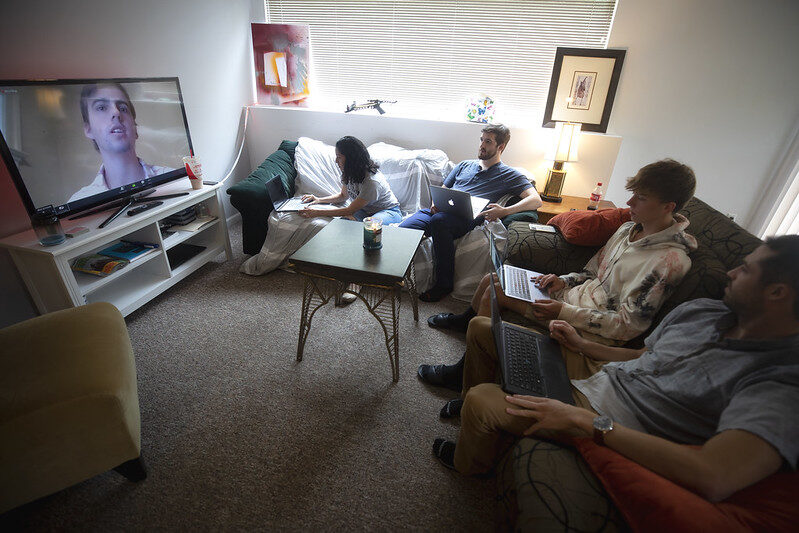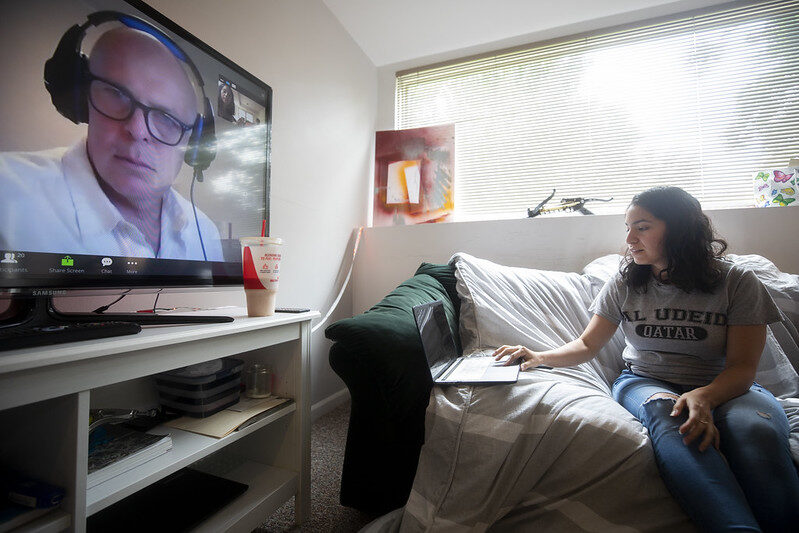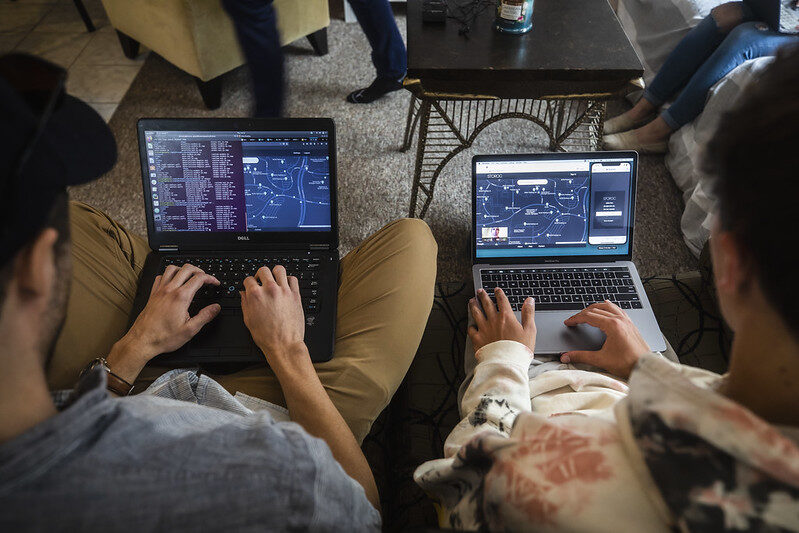This is the third term in a row that University of Michigan instructor David Chesney is teaching his unique software design course online, and he has learned from each iteration.
Chesney, who is a Toby Teorey Collegiate Lecturer in computer science and engineering, designed Software for Accessibility a decade ago. In the course, undergraduate students develop technology solutions for people with disabilities. When COVID-19 limited in-person learning, Chesney created an online version with a COVID-19 focus, called Software Against COVID-19. He discussed what the experience is teaching him about online learning and the future of education.
Like many other instructors, you redesigned your class in a matter of weeks this summer. How did you accomplish that?
I approached the problem like an engineer. If I were designing a piece of software, I’d start by thinking about all the things users might need to do with it—we call these “use cases.” And I’d think about what the best ways for users to interact with it might be. I applied the same approach to redesigning EECS 495.

First, I put together a spreadsheet listing the different ways that I interact with students and students interact with each other in a normal classroom setting. One is a single student presenting to all the other students. One is a group of four students presenting to all people in the classroom. One is when I give the students a mini homework assignment to work on actively in the classroom. And so on.
Next, I thought about what kind of hardware I’d need to create an online version of each of those models. Do I need a camera, a microphone or a tablet? Do I need to roll the dice? Do I need popsicle sticks? I also thought about whether each use case would be better in a synchronous or asynchronous model.
What are some specific tools that you’ve found to be effective?
Probably the single most effective tool I’ve found is Zoom breakout rooms. The students love them. I’ve experimented with the number of students in each room, and four to six seems to be just about right. It’s important to send them there with a purpose—here is the question that I want you to discuss and I’m going to call on one of you randomly so you can describe what you talked about.
I also put together a weekly newsletter of what to expect for the upcoming week. In a normal class, you can meet with the prof and ask questions after the lecture if something isn’t clear. Obviously we don’t have that now, so I wanted to create another line of communication. The weekly memo spells out things like whether there will be a quiz, what assignments are due, and the specific format of meetings I have planned. And I think it has been helpful.

Are there any experiments that haven’t gone as well?
One of the more unusual things I tried was making every assignment worth exactly three points. The project summary that takes two hours was worth three points, but the final project release that takes 180 hours of work from four people was also worth three points.
And, OK, the students didn’t love it. But it did not in any way diminish their effort on the final products. I find that really interesting and, frankly, I think it’s a tribute to the quality of the students in the class. It’s like—three points, 100 points, 6 million points, it doesn’t matter. We’re going to work hard. We’re going to create this wonderful project. I found that to be quite inspiring.
So are you ready to go fully online, even post-COVID?
Absolutely not. I deeply miss physically being there, just walking around and watching the students learn and solve problems. I especially miss the final project release—it’s essentially a celebration, a party. That just isn’t there. I still haven’t figured out how to put a joyous occasion like that in an online format.
How do you think the pandemic will change the future of education?
I think it’s a healthy thing that we’re asking different questions, thinking about the value that we add to the educational experience, what things have to be done in person and what might actually work better online.

The idea of recorded lectures is an interesting example. I’m not sure what the value is of me being in front of students in person, blathering on for 80 minutes. Maybe a high-quality, high-production value, asynchronous lecture that they can listen to at their own pace is more valuable. And when they get to the classroom, that’s when I give them what they need in order to actually do the project and build the thing.
One thing I’ve learned over the past several months is that even when we’re not together in person, it’s just as fascinating to watch the development process of these projects. The talent level of these students is just incredible, and my job is simply to create an environment where they can do their best work.


